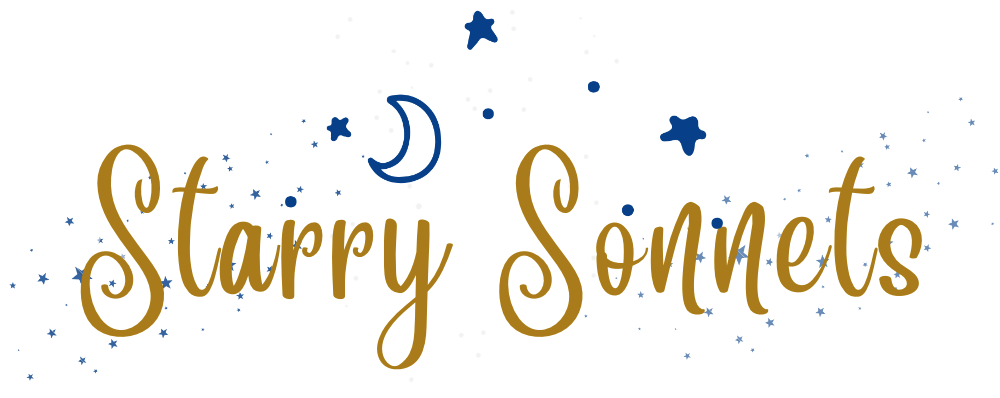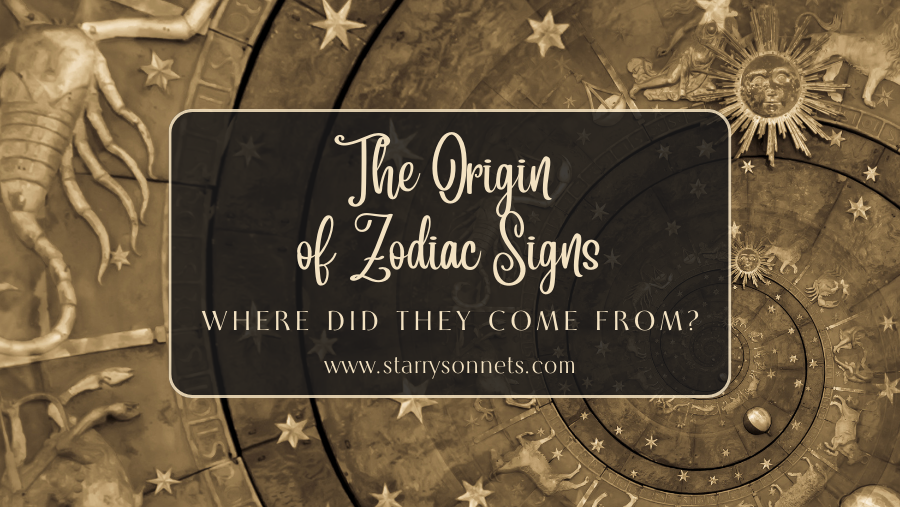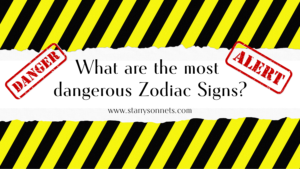Zodiac signs have fascinated and guided human beings throughout history. They are deeply rooted in ancient cultures, and still hold significance today.
But what is the origin of zodiac signs?
They are based on the Sun’s position at birth against the backdrop of 12 unique constellations. But in astrology, zodiac signs are more than just symbolic representations.
They form the crux of astrological predictions and interpretations, providing insights into one’s potential compatibilities and predicting future events.
From Western horoscopes to the Chinese zodiac. Different cultures have their take on it, but the fascination with zodiac signs is universal and never fades away.
Join us as we explore the origin and evolution of the Western zodiac signs and answer the question: where did Zodiac Signs come from?
Overview
- History of Zodiac Signs
- The Zodiac Signs and the Natural World
- Zodiac Signs in Modern Astrology
- Final Thoughts about the Origin of Zodiac Signs
- FAQs
History of Zodiac Signs
The intriguing journey of Zodiac signs takes us back to ancient civilizations where the sky was a canvas of divination and prophecy.
The history of zodiac signs is a testament to human curiosity and the desire to understand the mysteries of the universe. From the Babylonians to the Egyptians and the Greeks, every civilization has left its indelible imprint on the zodiac. What’s more, they all shaped it into the system that millions worldwide turn to for guidance today.
The Babylonian’s Contribution: Where it all started
The Babylonians were an ancient culture in the Mesopotamian region, around 2000 BC. And they made significant contributions to the development of zodiac signs.
With their astronomical observations and mathematical calculations, they devised a system that would eventually become the foundation of astrology as we know it.
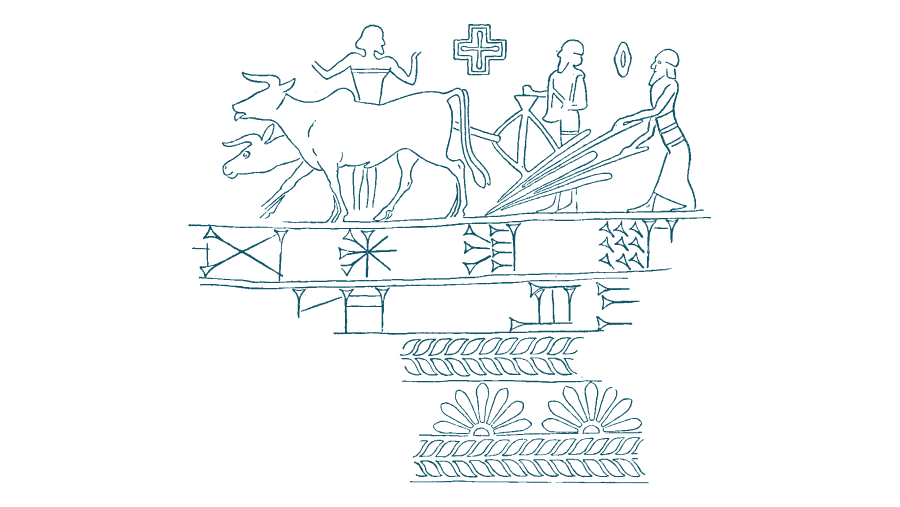
The Babylonians were the first to recognize that the Sun’s path through the sky over a year was not random but followed a specific route. They divided this route into twelve equal parts, each corresponding to a specific constellation, creating the earliest form of the zodiac. These divisions were likely influenced by the 12-month lunar cycle, which the Babylonians used as their calendar. The moon would appear in a different constellation each month, creating a celestial clock that the Babylonians could follow.
Further, this connection between the 12-month lunar cycle and the 12 zodiac signs is not just a coincidence. It reflects the Babylonians’ understanding of the cosmos and their desire to bring order to what seemed like chaos. By aligning the lunar calendar with the solar year and the zodiac, they created a harmonious system that linked the heavens with the earth and the cycles of time.
The Babylonian zodiac system was later adopted and refined by other cultures, and it still continues to be used in Western astrology today.

The Greek’s Role: Adapting the Zodiac
After the Babylonians came up with the zodiac concept, the Greeks adapted it to fit their own culture and beliefs.
You know those cool names for the zodiac signs, like Aquarius or Gemini?
That was the Greek’s influence as they renamed the zodiac constellations with their own mythology in mind.
For example, Leo was named after the Nemean lion that the hero Heracles defeated as part of his twelve labors. Scorpio was named after the scorpion that killed the great hunter Orion. And Aries was named after the ram that saved Phrixus and Helle from being sacrificed.
Through their myths and stories, the Greeks gave meaning and personality to each zodiac sign, adding a layer of depth to the astrological system.
The Greek astronomer Ptolemy further refined the Babylonian zodiac by dividing each constellation into 30 degrees . This allowed for more precise mapping of the position of celestial bodies and their influence on individuals based on their birth date.
The Greeks also introduced the idea that each planet was associated with a specific zodiac sign, further expanding the complexity of astrology and our understanding of how celestial bodies affect our lives.
So, while the Babylonians came up with the concept of the zodiac, the Greeks refined the system further and gave us the zodiac sign names we use today.
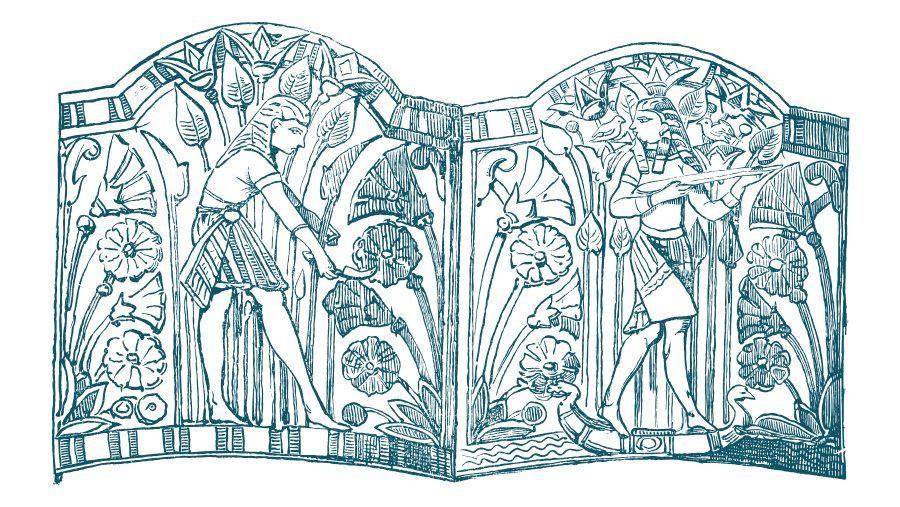
The Egyptian Calendar and Zodiac Signs
But the Babylonians and Greeks were not the only ones shaping the zodiac signs as we know them. The ancient Egyptians made significant contributions to astrology with their unique solar calendar.
In fact, they were one of the first civilizations to develop a 365-day solar calendar, which they used in addition to the lunar calendar (the older systems of the two).
This solar calendar influenced the development of zodiac signs by aligning them more closely with the solar year. This helped establish the idea that each zodiac sign ruled for about a month, mirroring the monthly cycle of the Egyptian calendar.
Unlike our current system, the Egyptian astrology signs were based on Egyptian gods. The Egyptians also introduced the concept of ‘Decans’.
The night sky was divided into 36 sections, each linked to a specific star or constellation known as a Decan. These Decans rose on the eastern horizon at dawn for ten days every year. Over time, these star movements became associated with certain events or outcomes, leading to the earliest form of horoscopes.
Although the Decan system is not commonly used in modern Western astrology, the ancient Egyptians further enriched the zodiac system with these concepts.
The Zodiac Signs and the Natural World
The zodiac signs are not just celestial symbols. They are intimately connected to the natural world, reflecting the changing seasons and embodying various elements and animals.
The connection between the zodiac signs and seasons is one of the most fundamental aspects of astrology. Each of the twelve zodiac signs represents a specific time of the year, with its characteristics often reflecting the qualities of the corresponding season.
For example, Aries marks the beginning of spring in the northern hemisphere, symbolizing new beginnings and growth. Similarly, Capricorn, which starts on December 21, is associated with the winter solstice, representing a time of reflection and planning.
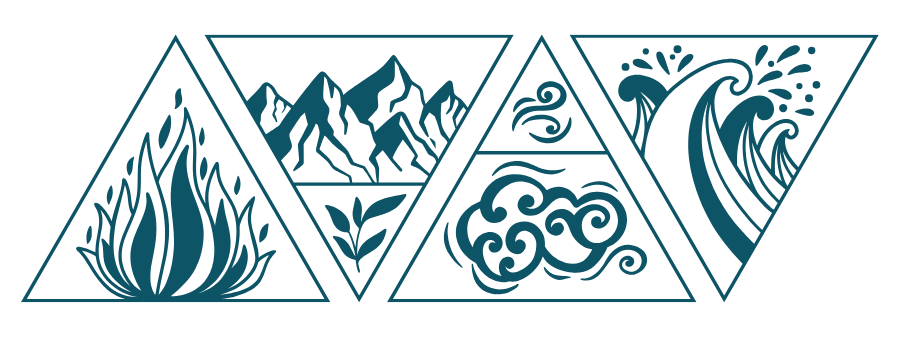
Moreover, the four elements of the natural world – fire, earth, air, and water – are represented in the zodiac. Each zodiac sign is associated with one of these elements, which is believed to influence the sign’s characteristics:
- Aries, Leo, and Sagittarius, as fire signs, are all about passion and dynamism.
- Taurus, Virgo, and Capricorn as earth signs are practical and down-to-earth.
- Gemini, Libra, and Aquarius, as air signs, are all about ideas and communication.
- Cancer, Scorpio, Pisces as water signs are intuitive and emotional.
In addition to seasons and elements, many zodiac signs are symbolized by animals or mythological creatures. For instance, Leo is represented by the lion, symbolizing courage and royalty, while Scorpio is symbolized by the scorpion, reflecting its perceived intensity and mystery.
In this way, the zodiac signs serve as a bridge between the celestial and natural worlds. They remind us of our connection to the universe and our part in the grand scheme of life.
Zodiac Signs in Modern Astrology
Zodiac signs remain significant in modern astrology, serving as powerful tools for self-understanding and guidance. Despite the advancements in science and technology, these ancient symbols maintain their relevance and popularity today.
In contemporary astrology, each person’s zodiac sign is determined by the Sun’s position at the time of their birth. This “sun sign” astrology is today’s most common form, often popularized through horoscopes.
Zodiac signs are used in various ways in modern astrology. For instance, they can provide insight into relationship compatibility, offering clues about which signs might get along and which might encounter some issues. They can also help individuals understand their life purpose or career path, with each sign associated with specific professions or roles.
But as we all know, zodiac signs continue to be a popular cultural phenomenon.
From zodiac-themed merchandise like jewelry and clothing to astrological apps and memes… Despite the skepticism often directed towards astrology, the signs are still a big part of our lives.
Final Thoughts about Origin of Zodiac Signs
As you can see, the origin of zodiac signs as we know them spans millennia, cultures, and continents. And that doesn’t consider all the additional cultures with their own zodiac systems, such as the ancient Mayans, the Celts, or the traditional Chinese zodiacs that are still popular today.
These origins remind us of the awe-inspiring complexity of the universe and how we constantly strive to learn and evolve. Whether we regard astrology as a science, an art, a psychological tool, or simply a form of entertainment, there’s no denying the profound impact of astrology on human consciousness.
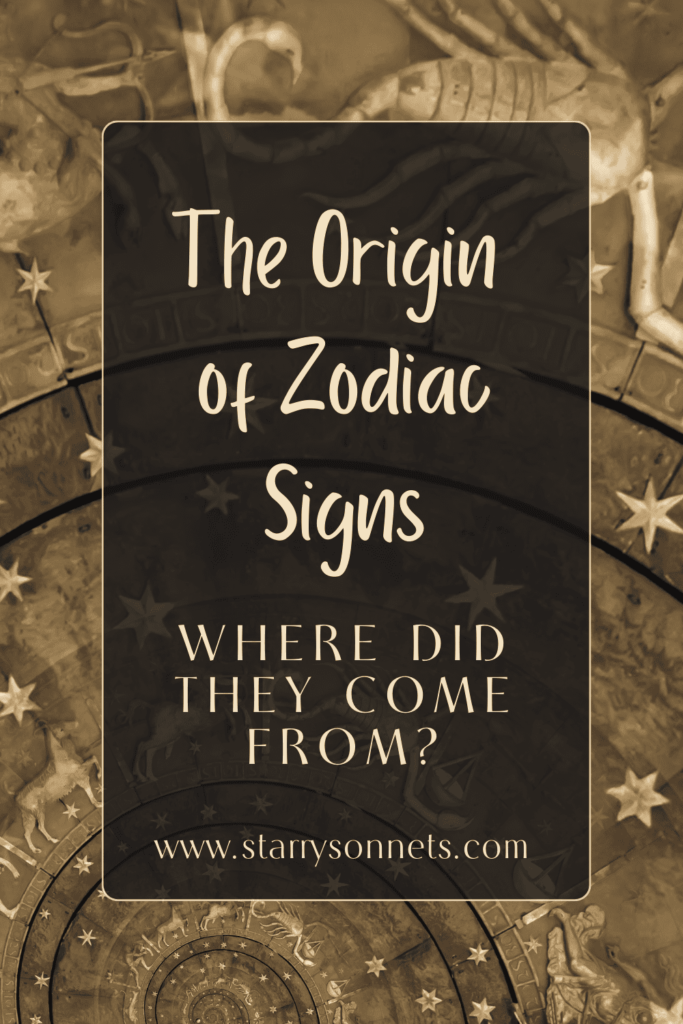
FAQs – Some more facts:
The term ‘zodiac’ comes from the Greek word ‘zodiakos,’ which means ‘circle of animals.’ It refers to the pattern of constellations found along the Sun’s apparent path in the sky.
A Zodiac sign refers to the astrological sign that the Sun was in at the time of your birth. There are 12 Zodiac signs, each named after the constellation that appears in its zodiac section.
Star sign is a different term for zodiac sign (also called astrology sign). It describes the same 12 zodiac signs that we know and use today.
The Zodiac signs in order are as follows: Aries, Taurus, Gemini, Cancer, Leo, Virgo, Libra, Scorpio, Sagittarius, Capricorn, Aquarius, and Pisces.
There are 12 signs because the ancient Babylonians had a 12-month lunar calendar. They divided the zodiac into 12 equal parts, each named after the constellation that appeared in it.
You might also like:
